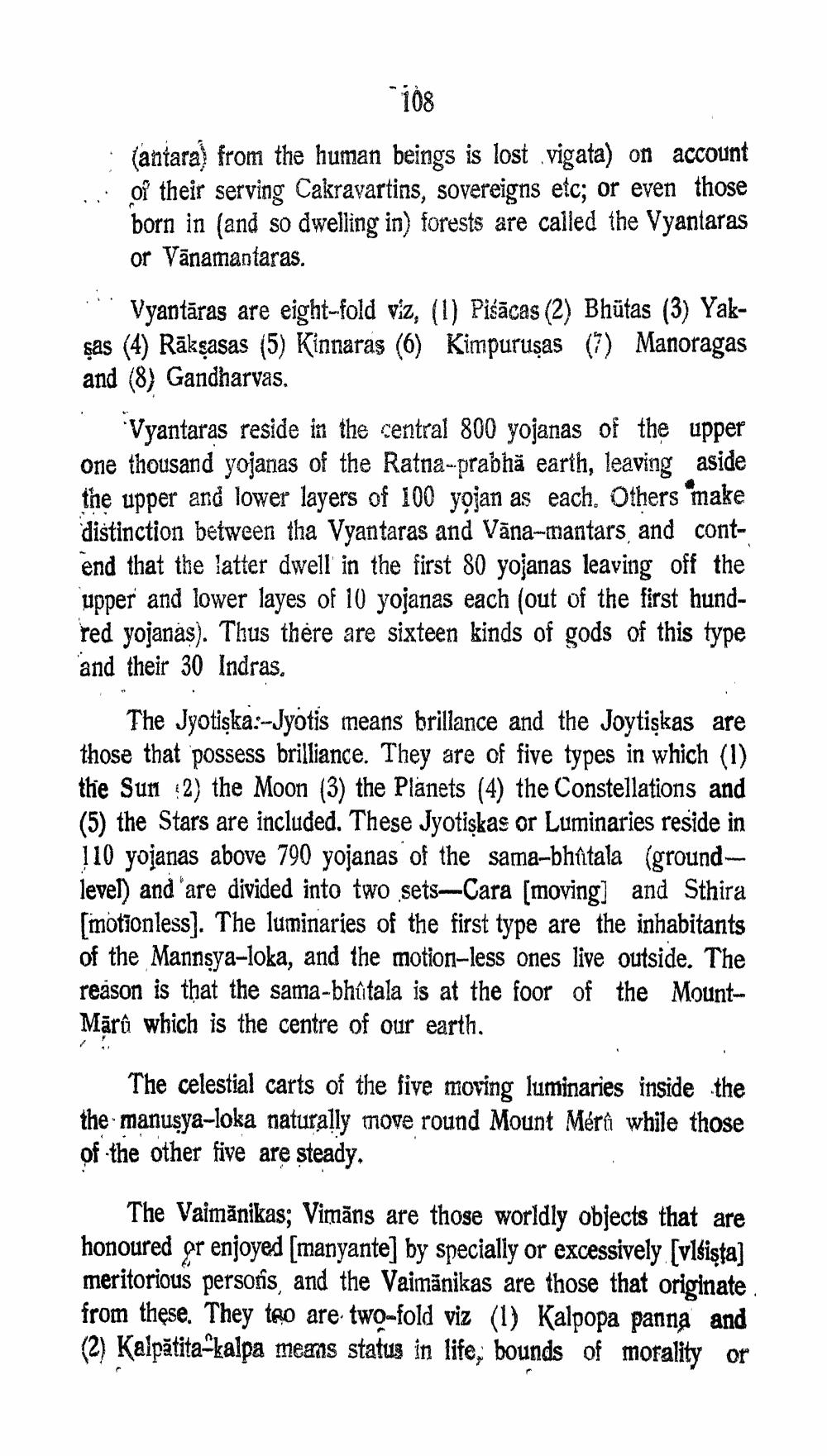________________
108
(antara) from the human beings is lost vigata) on account of their serving Cakravartins, sovereigns etc; or even those born in (and so dwelling in) forests are called the Vyantaras or Vanamantaras.
Vyantāras are eight-fold viz, (1) Pisacas (2) Bhutas (3) Yaksas (4) Rākṣasas (5) Kinnaras (6) Kimpurusas (7) Manoragas and (8) Gandharvas.
Vyantaras reside in the central 800 yojanas of the upper one thousand yojanas of the Ratna-prabha earth, leaving aside the upper and lower layers of 100 yojan as each. Others make distinction between tha Vyantaras and Vana-mantars, and contend that the latter dwell in the first 80 yojanas leaving off the upper and lower layes of 10 yojanas each (out of the first hundred yojanas). Thus there are sixteen kinds of gods of this type and their 30 Indras.
The Jyotiska:-Jyotis means brillance and the Joytiskas are those that possess brilliance. They are of five types in which (1) the Sun 2) the Moon (3) the Planets (4) the Constellations and (5) the Stars are included. These Jyotiskas or Luminaries reside in 110 yojanas above 790 yojanas of the sama-bhitala (groundlevel) and are divided into two sets-Cara [moving] and Sthira [motionless]. The luminaries of the first type are the inhabitants of the Mannsya-loka, and the motion-less ones live outside. The reason is that the sama-bhutala is at the foor of the MountMarû which is the centre of our earth.
The celestial carts of the five moving luminaries inside the the manusya-loka naturally move round Mount Méra while those of the other five are steady.
The Vaimanikas; Vimans are those worldly objects that are honoured or enjoyed [manyante] by specially or excessively [visista] meritorious persons, and the Vaimänikas are those that originate from these. They too are two-fold viz (1) Kalpopa panna and (2) Kalpatita-kalpa means status in life, bounds of morality or




